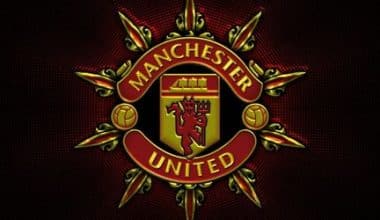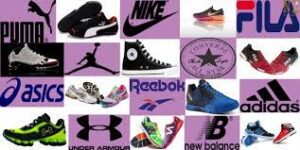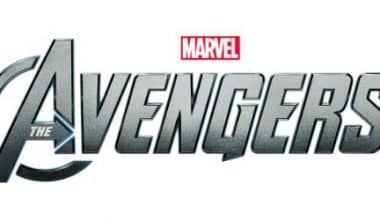Few things make you think of wild freedom and toughness like a Jeep, which is one of the most famous car brands in the United States. The company has been creating powerful, rugged vehicles for both military and civilian use since 1941. In terms of recent achievement, Jeep sales in the United States alone were 930,458 units in 2016. Millions of people all over the world recognize the Jeep emblem and brand. The brand and grill logo have definitely enjoyed a great deal of success over the years, and in this article, we will look at the history of the Jeep logo, as well as the evolution of the products from Willys to Wrangler.
General Overview Of The Jeep Brand
The Jeep brand has had various owners since its inception. Willys-Overland was the first owner, responding to the Army’s request for a four-wheel-drive vehicle that could be employed in reconnaissance missions. To create the earliest prototypes, Willys-Overland collaborated with the American Bantam Car Company and Ford.
Because only Willys-Overland remained involved in Jeep manufacture after the war, they were granted the right to trademark the term. The first civilian Jeep was manufactured by the company in 1945. (a model they actually called the Civilian Jeep or CJ for short). Willys-Overland, on the other hand, sold the Jeep brand to Kaiser Motors eight years later. Kaiser Motors was able to keep the name until 1970 when it was sold to American Motors Corporation (AMC). Still, the Jeep brand underwent one more transfer before it found its current owner. In 1987, Chrysler purchased AMC and still controls the Jeep name today.
The word “Jeep” is supposed to be a linguistic abbreviation of the Ford GP, one of the earliest prototypes built by the Ford, Willys-Overland, and American Bantam Motors collaboration. The name remained, and so did the emblem that the brand devised for this new caliber of vehicle.
History of The Jeep Logo
Little is known about the history of the Jeep logo. For a time, the emblem didn’t even appear on Jeeps that were manufactured. Instead, the automobiles just bore the word “Jeep.” Jeep ultimately began incorporating its emblem on its vehicles. However, current versions have reverted to solely having the brand name on the car. Jeep currently only uses its complete logo in specific marketing initiatives.
This decision to not feature their full logo on the vehicles reflects more on the popularity and recognition of the Jeep moniker than it is plausible to suppose Jeep’s logo was unpopular. Jeep’s experience in WWI and WWII cemented its brand as synonymous with toughness, durability, and the American spirit. When it came time to promote their vehicles, all the brand had to do was emblazon them with the word “Jeep,” and the message was loud and obvious.
Evolution Of The Jeep Logo
Throughout most of the Company’s history, the Jeep wordmark was the most preferred choice for Jeep logos. Although there is a full Jeep grill logo available today, it is normally mainly utilized for marketing purposes.
Even the latest Jeep models simply feature the brand name on the vehicle badge.
The lack of a full logo on the vehicle is most likely due to the Company’s understanding of how well-known the Jeep name has become over the years. Because of the company’s role in both World Wars, the name became linked with strength, patriotism, and durability.
Jeep needed to do little more than including its name when it came to marketing its designs.
The brand and logo have seen great success over the years, despite a few minor alterations.
Here’s a quick review of the Jeep logo’s evolution…
1941-1945
Jeep used the wordmark in a block, sans-serif capital letters between 1941 and 1945. Bantam, Willys, and Ford were listed below in a somewhat smaller font.
1945-1963
The design was altered slightly between 1945 and 1963. The subtitle containing the names beneath “Jeep” has vanished. The font was altered as well, evolving to a serif form with a capital letter followed by lower-case letters.
The color scheme also changed from red and black to plain black text.
1963-1970
The first Jeep symbol appeared between 1963 and 1970. The hue of the Jeep emblem changed yet again, this time with a surrounding circle. The basic colors of the insignia were gold and red, with numerous silver accents. Thus, making it ideal for an automobile badge.
1970-1987
Jeep returned to the sans-serif font from 1970 to 1987. However, the letters were now a mix of upper and lower case. As a form of insignia, the Jeep wordmark was supplemented with a sequence of geometric shapes.
1987-1993
The Jeep logo from 1987 to 1993 contained the Jeep wordmark within a black box with curved corners. Above the white logo was a pentagon with an interior star.
Finally, in 1993, the Jeep logo changed again, and it has stayed mostly unchanged since then. This new logo was a simple sans-serif word mark in a camouflage-like green, possibly intended to evoke military associations.
This logo is frequently used without any other emblem. However, there is a variant of the Jeep symbol that includes an image as well.
Notably, Jeep has dabbled with a few different concepts throughout the years, including a number of red and gold emblems. However, the variations above reflect some of the Jeep emblem’s more enduring incarnations.
Elements of Jeep Logo Design
The entire Jeep logo is a design that resembles a car grill and is bookended by two circles that represent headlights. It’s a design that stands apart from the logos used by most car companies; ovals, circles, shields, and other shapes are prominent in car logos. The brand employs the Helvetica Bold typeface to spell out “Jeep”. This is normally situated above the grill and headlight design of the logo.
The Jeep logo’s colors have changed a few times over the years. The first officially registered logo had a red and gold color scheme. But, once Jeep was acquired by AMC, the gold was replaced with blue. Today, the Jeep emblem is a consistent dark green color. This is most likely a nod to Jeep’s long connection with the US military.
Overall, the Jeep logo is quite simple, made more simpler by the fact that the brand only uses the whole image for particular campaigns and instead labels all of their vehicles with the word “Jeep.” In some ways, this simplicity is the most significant aspect of the logo’s design. This is because it stays faithful to the company it represents.
According to popular belief, the word Jeep is an acronym for Just Enough Essential Parts. Whether or not this is the genuine origin of the name, the message is correct. One of the reasons Jeeps are so robust and dependable is that they don’t come with a bunch of bells and whistles that can fail. Jeeps are basic yet effective, thus it only made reasonable to create a logo with similar characteristics.
Popularity of the Jeep Logo
It’s difficult to conclude that the Jeep logo is extremely popular when the brand itself rarely uses it. Even yet, Jeep, a brand that was bound to be known far more for its name than its logo, recognized the value of having a fantastic, identifiable emblem.
At the end of the day, you don’t have to plaster your logo all over your advertising campaigns for it to be a significant, irreplaceable element of your brand. Even though Jeep rarely displays their entire emblem, the Jeep logo represents one of the most historic and well-known vehicle brands still in existence today. This fact alone makes the Jeep logo as significant and historically significant as any other logo.
Jeep Grill Logo History
The Jeep grill logo is a less well-known variation of the Jeep insignia. As previously stated, the Company typically uses only the wordmark on the majority of its material. However, the complete Jeep symbol is commonly shown in marketing campaigns.
The significance of the Jeep symbol is straightforward. Jeep, a pioneer in off-road vehicles, picked the grill of a four-wheel drive car as its primary trademark emblem.
Despite the fact that the Jeep team experimented with a few various forms and styles throughout the years, this grill is still the go-to logo for Jeep today.
The fundamental colors of the Jeep symbol are the same as those of the Jeep wordmark: white and green. The military green is an appropriate nod to Jeep’s army influence in the previous decade. The grill is straightforward, with a circle on either side to symbolize headlights.
Colors of the Jeep logo
Jeep’s most popular hues are “Jeep green” and “Jeep black.” The particular shade of green utilized in the Jeep grill logo is unique to the company, while appearing to be extremely similar to the military colors most of us associate with the army.
Font for Jeep logo
Despite a few tweaks over the years, Jeep landed on a sans-serif font in the 1970s and has stuck with it ever since. The wordmark is in Helvetica bold, which makes it easily identifiable. It’s also quite easy to read, even when plastered on a car badge.
Jeep logo design
The Jeep logo is made up of a succession of curved-end lines that are meant to imitate a vehicle’s grill. Two rings depicting headlights mark the grill on either side. The wordmark is placed above the emblem in the logo’s design.
Jeep’s catchphrase
Jeep occasionally incorporates a statement beneath its emblem, especially in marketing efforts. “Go Anywhere” is the slogan. “Do anything.” According to Jeep’s promotional team, this statement is a “Way of life.”
What Did Jeep Stand For?
Jeep is coined from the military term GP, which stands for General Purpose vehicles.
Who Originally Invented the Jeep?
American Bantam is the creator of the first Jeep. He built approximately 2,700 of them to the BRC-40 design, but spent the rest of the war building heavy-duty trailers for the Army.
History of the Jeep Wrangler
Jeep is finally presenting the 2018 Wrangler at the 2017 Los Angeles Auto Show, after what feels like years of speculation, rumors, and leaks. We’ve already seen the first official photographs and know the majority of the available selections, but it’s still a big deal. Before we get into the new Wrangler, let’s take a look back at the Wrangler’s history in the United States.
#1. Jeep Willys MB 1942
The Wrangler name didn’t appear until the 1987 model year, when it was introduced as a replacement for the Jeep CJ, but the Wrangler’s roots go back even further, to World War II, when Willys-Overland was awarded a contract by the United States military to provide a four-wheel-drive vehicle for the war. That car was officially known as the MB, but it quickly earned the moniker “jeep.”
#2. Willys-Overland CJ, 1945-1954
Following the success of the Jeep during WWII, Willys designed a civilian counterpart that could be sold in the United States. The Willys-Overland CJ-2A went into production in 1945, immediately acquiring a reputation for being dependable, easy to repair, and nearly hard to break. These characteristics make it an excellent agricultural and commercial vehicle. It was succeeded by the upgraded CJ-3A and CJ-3B. The CJ-4 was built but never produced.
Kaiser Motors purchased Willys-Overland in 1953. The following year, it debuted the CJ-5, its most recent model. Despite the fact that there were numerous variants, the CJ-5 remained in production for nearly 30 years. This is also the version that was legally known as a Jeep thanks to a Kaiser name change.
Kaiser produced a Tuxedo Park line for buyers looking for a less utilitarian vehicle. It also produced a longer version known as the CJ-6. Although American Motors Corporation purchased Kaiser-Jeep in 1970, the CJ-5 continued to exist.
#3. Jeep CJ-7, 1976-1986
Jeep introduced a new model, the CJ-7, in 1976. It was larger than the CJ-5, which Jeep was still making, and it had better on-road qualities, as well as a number of optional extras like an automatic transmission, a roof, and metal doors. It was in production for 11 years when AMC decided it needed to be replaced.
#4. Jeep Wrangler YJ, 1987-1995
Given its current reputation as a basic off-roader, it may appear strange that the first Wrangler was developed with on-road performance in mind. The YJ, on the other hand, was a more civilized off-roader, with a wider track, lower ride height, less body roll, and a larger windscreen. The squared-off headlamps, on the other hand, were a controversial design choice. Soon after the release of the YJ, Chrysler purchased Jeep’s parent company, AMC.
Power was provided by either a 2.5-liter four-cylinder or a 4.2-liter inline-six engine, with each engine offering a three-speed automatic or a five-speed manual transmission. However, in 1991, a newer 4.0-liter I-6 replaced the old 4.2-liter, with fuel injection providing the Wrangler with much-needed power. Jeep added even more creature conveniences over the next few years, such as rear seat belts and antilock brakes.
#5. Jeep Wrangler TJ 1997-2006
Jeep released a new model of Wrangler, the TJ, in 1997. This model featured circular headlights for the first time, as well as coil-spring suspension rather than leaf springs. The TJ, on the other hand, was a significant improvement to the YJ rather than a new redesign. This meant that the YJ’s powertrain options were carried over until 2003, when the 2.5-liter AMC four-cylinder was replaced by a newer 2.4-liter four-cylinder.
“Jeep definitely didn’t turn the Wrangler into the off-road equivalent of the BMW M3, but it substantially curbed the rock climber’s body-related rattles, poor cabin-temperature control, door-seal wind noise, and choppy ride,” we said at the time. “These refinements much improve the Jeep Wrangler while, true to the wishes of its loyal buyers, allowing it to remain a unique vehicle with a healthy helping of charm, all-American flavor, and
#6. Jeep Wrangler JK 2007-2018
Jeep totally redesigned the Wrangler for 2007. The new car was taller, wider, and longer, with a longer wheelbase. It was intended to be more comfortable than the TJ, and it included safety systems such as stability control and traction control. Jeep also introduced a four-door vehicle for the first time, which proved popular.
The JK was also the first version of Wrangler to be designed without the use of any AMC components. This entailed introducing a new engine, a 3.8-liter V-6, and discontinuing the four-cylinder. The Wrangler also gets new transmission options. Buyers could now select between a six-speed manual and a four-speed automatic transmission. After Jeep updated the Wrangler with a new interior and a 3.6-liter V-6, purchasers had the choice of a new six-speed manual or a five-speed automatic transmission.
“Based on our short (although intense) drives in Africa, the new Jeep JK appears to be a stirringly successful upgrade—a safer, more civilized, more user-friendly Wrangler that yet breathes the renowned, military-bred confidence and prowess of its forefathers,” we said in our First Drive review.
#7. Jeep Wrangler JL (2018-Present)
Jeep focused on increasing the Wrangler’s efficiency, adding additional technology, and improving off-road prowess with the JL generation. Although the body is still built of high-strength steel, the bonnet, doors, and windshield frame are now made of aluminum. Meanwhile, the tailgate is made of magnesium. Although the 3.6-liter V-6 is still available, Jeep now offers a turbocharged four-cylinder, and a 3.0-liter diesel V-6 will be available soon. There is still a six-speed manual transmission available, but an eight-speed automatic is also available.
Modern technology options for the JL include an 8.4-inch touchscreen infotainment system, rear parking sensors with cross-traffic alert, and a blind-spot monitoring system.
“Although it is very much a modernized Jeep with the sorts of features and technology most buyers expect, it is also designed by and for Jeepers, so much so that editors from leading off-road magazines were consulted early on to ensure it stayed true to Jeep heritage.”
Competitors of Jeep
#1. The Ford Bronco
The newest generation of Ford Bronco, a historic car resurrected from the ashes of history, is doing the Jeep thing—Ford style! And it’s safe to say that it’s accomplished its goal of providing a terrific Wrangler alternative that delivers on performance, comfort, and technology.
A Ford Bronco can be ordered with the standard 300-horsepower turbocharged 2.3-liter four-cylinder engine or with a 2.7-liter twin-turbo V6 engine that produces 330 horsepower.
Overall, the Bronco has better on-road manners than the Wrangler while still being capable of doing almost everything the Wrangler can do. It, for example, has the same 3,500-pound towing capacity, is available in 2- and 4-door models, and has plenty of off-road capability.
#2. Kia Telluride
For those who would normally buy a four-door Jeep Wrangler Unlimited, the Kia Telluride adds a third row of seating for a total seating capacity of eight. It’s essentially the same as the Hyundai Palisade, although the Telluride has received the most positive feedback.
It has a spectacular amount of off-roading capability thanks to a 291-horsepower 3.6-liter V6 engine that exceeds other Wrangler engines except the massive V8 Rubicon 392 engine found in the 4-door Unlimited model. All of the best safety features are standard, and the price for even the top trim is nothing to scoff at!
#3. Hyundai Palisade
While the Hyundai Palisade and its Kia Telluride sibling aren’t as off-road-ready as a Jeep Wrangler, they provide all the off-roading a large, adventuring family could want. No, they aren’t your go-to trail-riding SUVs, but with three rows of seating, a 5000-pound towing capacity, and a reasonable pricing for even the highest level trims, the Palisade is a good choice for your family’s camping SUV.
All of the greatest safety features are standard, just like in the Kia. Manual shifting is possible thanks to wheel-mounted paddle shifters, and optional AWD gives plenty of slip reduction. The Palisade may not be as thrilling as a Wrangler Rubicon, but it will get the job done when it comes to transporting your family to your favorite camping destinations.
#4. Kia Seltos.
It’s possible that you don’t require an SUV with the off-road prowess of a Jeep Wrangler. If you only need something with appropriate “soft-roading” capability—something to get you and your small family out to hiking trails and safely down gravel roads—the Kia Seltos is substantially less expensive than classic 2-door utes like the Wrangler and Bronco. The Seltos retains four doors and five seats, and while it will never outperform the previously mentioned sport-utes, it is a well-built compact SUV with plenty of capability.
#5. Toyota RAV4
The Toyota RAV4, a tiny 2-row SUV that prioritizes standard safety features while still going all-out on off-road capabilities with the top trim TRD Off-Road, is another vehicle that allows you to be realistic about your off-roading needs.
You’ll pay a little more than a base Wrangler trim, but you’ll get standard AWD, an enhanced off-road suspension, 18-inch alloy wheels with all-terrain tires, and all the bells and whistles like heated seats and a 360-degree video system.
The RAV4 uses less gas than several of the other finalists on our list while yet offering the same 3,500-pound towing capacity as the Wrangler and Bronco.
#6. G-Class Mercedes-Benz
If money is no object, it’s difficult to argue that the Mercedes-Benz G-Class outperforms the Jeep Wrangler Unlimited Rubicon 392. While its V8 may not produce the same amount of horsepower as the Rubicon 392, the G550 more than doubles the Wrangler’s towing capacity, offering a maximum of 7,000 pounds.
The Jeep appears to belong in the American outback. On the other hand, the G550 appears to be driven about a desert city by a super-successful archeologist.
The inside is as opulent as it gets, but there are no fuel economy improvements over the similarly gas-guzzling Wrangler Unlimited Rubicon.
#7. Defender by Land Rover
The Land Rover Defender will celebrate its original 1993 Defender 110 First Edition vehicles in 2023, with a 296-horsepower turbocharged 2.0-liter I-4.
While it is unquestionably more expensive than a Wrangler, the Land Rover provides a more refined driving experience overall. For starters, it drives much better on the highway than other SUVs, and it comes with a slew of optional off-roading accessories.
It has a higher maximum ground clearance than the Jeep Wrangler Rubicon—11.5 inches vs. 10.8 inches—and can traverse an additional 5 inches of water. To finish things out, the Defender has a maximum towing capacity of 8200 pounds. Unfortunately, the Land Rover Defender will simply be out of reach for many buyers in terms of starting price and recurring costs.
#8. R1S Rivian
If you’re already willing to pay full price for a Rubicon 392, consider a slightly more expensive alternative: an all-electric Rivian R1S that can reach 60 mph in 3.2 seconds.
The R1S has an adjustable air suspension that can be raised up to 15.0 inches, standard all-wheel drive with four motors, and can tow more than 7700 pounds, all while providing incredible fuel economy and up to 400 miles of range with the optional larger battery.
Can I customize my Jeep vehicle with the Jeep logo?
Yes, customers can customize their Jeep vehicles with Jeep logo merchandise and accessories, including grille emblems, hood ornaments, and interior badges.
What is the connection between the Jeep brand and off-roading?
The Jeep brand is closely associated with off-roading, reflecting the brand’s reputation for rugged durability and versatility. Jeep vehicles are designed and built to perform in challenging off-road conditions, making them popular among off-road enthusiasts.
How is the Jeep logo incorporated into Jeep vehicle designs?
The Jeep logo is incorporated into Jeep vehicle designs in various ways, including as a grille emblem, hood ornament, and interior badge.
Can I purchase Jeep logo merchandise and accessories?
Yes, Jeep logo merchandise and accessories, such as clothing, hats, key chains, and phone cases, are available for purchase at Jeep dealerships, online, and through third-party retailers.
How is the Jeep logo recognized around the world?
The Jeep logo is recognized around the world as a symbol of rugged durability and versatility, reflecting the brand’s heritage and reputation.
Is the Jeep logo used on Jeep products other than vehicles?
Yes, the Jeep logo is used on a variety of products, including clothing, accessories, and other merchandise.
In Conclusion,
In comparison to many of the world’s most famous logos, Jeep’s insignia may appear fairly plain. Aside from the word mark and the basic grill design, there’s not much to uncover here.
The image and logo font combination is rarely used at the same time. Most Jeep vehicles today will only have the name in the emblem and nothing else.
Despite employing the name for most of its branding, Jeep realizes the necessity for an identifiable emblem. When Jeep wishes to reach out to its customers and interact with a large community of supporters, the Jeep grill logo still has a big impact.
Jeep is a great example of a corporation that doesn’t have to oversaturate its advertising with symbols and badges.
The Jeep brand is well-known enough to captivate the hearts and minds of people all around the world, not just Americans. Although Jeep rarely uses the entire logo, it is still one of the most well-known companies in the world and a significant part of American history.
Related Articles
- What Is Shares Outstanding: Definition & Understanding Its Calculation
- FORD LOGO: History, Meaning, Symbol, Evolution & Branding Tips.
- CHIPOTLE LOGO: Meaning, Font and History
- Asset Management Company: List Of Asset Management Companies
- KITCHEN APPLIANCES: Top 10 Must-have Small kitchen appliances for your business
- YMCA LOGO: Meaning, Their Motto, Jobs and Application






